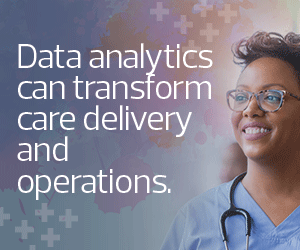The Quintuple Aim as an Evolution of Healthcare Goals
The Quintuple Aim is the latest iteration of a concept first described in 2008. Initially, the Triple Aim provided a framework to improve population health, enhance the patient experience and reduce the costs of care. As the Institute for Healthcare Improvement described it, “the framework serves as the foundation for organizations and communities to successfully navigate the transition from a focus on health care to optimizing health for individuals and populations.”
Amid concerns that burnout and job dissatisfaction in the healthcare workforce made it difficult for organizations to achieve the Triple Aim, advocates proposed the Quadruple Aim in 2014, adding a fourth goal of improving the work life of clinical staff.
Similarly, the Quintuple Aim arose in 2022 in response to a previously unmet need. In this case, advocates cited health inequity among socially marginalized populations, older adults and individuals living in poverty. Though such inequities have existed for centuries, the global COVID-19 outbreak heightened awareness of these issues for healthcare leaders and ordinary people alike.
WATCH: Find out how collecting the right data can improve health equity.
Measurable Improvement Under the Quintuple Aim
Viewed broadly, the Quintuple Aim provides a set of aspirations for healthcare. Like its predecessors, though, the Quintuple Aim is meant to serve as a framework for measurable improvement.
In a white paper, the Agency for Healthcare Research and Quality outlined a range of metrics that illustrate an organization’s outcomes. Some are likely already in use, whether it’s Consumer Assessment of Healthcare Providers and Systems survey results or internal data on emergency department utilization or hospital readmissions. Other metrics may be less familiar, such as the Maslach Burnout Inventory for measuring staff satisfaction or the Protocol for Responding to and Assessing Patients’ Assets, Risks and Experiences survey for identifying social determinants of health.
Data on outcomes alone is insufficient to spur improvement, however, as it captures a single moment in time. Organizations also need to measure operational performance as it’s happening. Effectively addressing burnout, for example, means knowing how many nurses were scheduled for a shift, how many nurses are actually working, how many patients they have and how that compares with optimal nurse-to-patient ratios, for example.
Improving patient outcomes, meanwhile, requires monitoring patients both in the hospital and at home. “You need to be able to connect the dots across the continuum of care,” Gopalkrishnan says. But organizations can quickly become overwhelmed with performance data from internal and external sources.
Click the banner below to learn how a modern data analytics program can optimize care.












